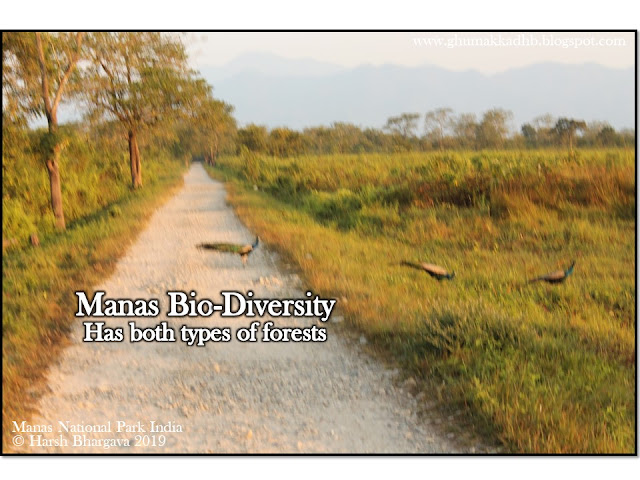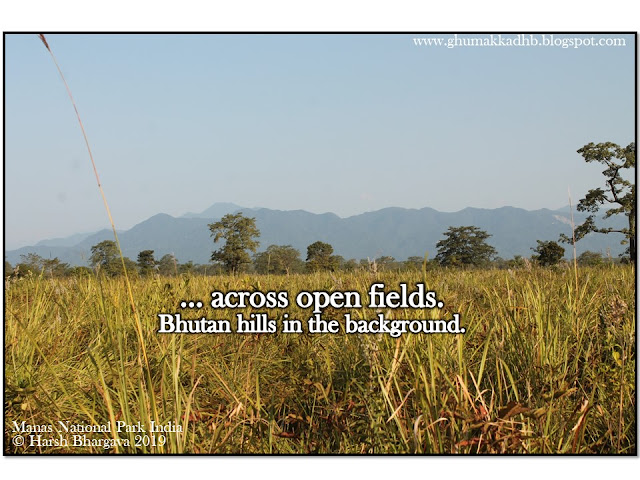Which tree was it in KBG-15?
Where is it grown?
Where did you find the seeds?
Who won the contest KBG-15?
The answer to Contest No. 15 of Kaun Banega Ghumakkad (KBG) कौन बनेगा घुमक्कड़ is here!
It was the Golden Trumpet tree. Scientific name being Tabebuia Aurea or Tabebuia Argentea.
It is grown in India, South America and many other regions. Other answers given by on-line contestants were Silk Cotton, Alsomitra Macrocarpa, Semal, Albizia, Meranti, Shorea, Saal, Teak, and Mulbery.
Why this name? Because it gives golden flowers around Holi होली in India (generally in March) which are in the shape of trumpets. During the flowering season which lasts for about two weeks, the tree sheds all its leaves. And then its a riot of golden colour seen from a distance. See the picture below.
Where did I find the seeds?
Ghumakkad found the seeds on 18th fairway of a golf course in Secunderabad India. The same place where the above picture was taken. The fairway was littered with thousands of seeds with white 'feathery' wings which caught my eye. You may like to browse the story 'Why I Love Golfing?' for more pictures.
Similar Looking Seeds
Many readers got confused with Alsomitra macrocarpa which grows widely in Indonesia and many other regions of the world. But these readers did not see our 2nd clue which showed the tree and a bean shedding the seeds. In comparison, Alsomitra fruit is football sized.
The Winners
Once again, the contest was keenly fought on-line with more than 300 contestants. The first correct answer came in less than 5 minutes! However, we received only two correct answers. Therefore, there is no third winner unlike previous contests. We congratulate the winners who come from different backgrounds and professions.
Where is it grown?
Where did you find the seeds?
Who won the contest KBG-15?
The answer to Contest No. 15 of Kaun Banega Ghumakkad (KBG) कौन बनेगा घुमक्कड़ is here!
It was the Golden Trumpet tree. Scientific name being Tabebuia Aurea or Tabebuia Argentea.
It is grown in India, South America and many other regions. Other answers given by on-line contestants were Silk Cotton, Alsomitra Macrocarpa, Semal, Albizia, Meranti, Shorea, Saal, Teak, and Mulbery.
Why this name? Because it gives golden flowers around Holi होली in India (generally in March) which are in the shape of trumpets. During the flowering season which lasts for about two weeks, the tree sheds all its leaves. And then its a riot of golden colour seen from a distance. See the picture below.
Where did I find the seeds?
Ghumakkad found the seeds on 18th fairway of a golf course in Secunderabad India. The same place where the above picture was taken. The fairway was littered with thousands of seeds with white 'feathery' wings which caught my eye. You may like to browse the story 'Why I Love Golfing?' for more pictures.
Similar Looking Seeds
Many readers got confused with Alsomitra macrocarpa which grows widely in Indonesia and many other regions of the world. But these readers did not see our 2nd clue which showed the tree and a bean shedding the seeds. In comparison, Alsomitra fruit is football sized.
The Winners
Once again, the contest was keenly fought on-line with more than 300 contestants. The first correct answer came in less than 5 minutes! However, we received only two correct answers. Therefore, there is no third winner unlike previous contests. We congratulate the winners who come from different backgrounds and professions.
- Wing Commander Yella Prakash Rao (Retd), Helicopter Pilot, Bird Watcher and Golfer
- Prof Praneetha Mudholkar, Marketing and Soft Skills Faculty and Nature Lover
Once again, we thank all the readers for their active support in keeping the KBG Contest going! Our aim of generating awareness about the Environment, Nature and Heritage through this contest has been appreciated by many readers. In some way KBG Contest is like a seed we have sown in each one of you. Recalling RL Stevenson's line “Don't judge each day by the harvest you reap but by the seeds that you plant.”
Thanks are due to Dr Chitra Shanker without whose expert guidance we would have made no headway.
KBG-16 will arrive soon. But before that Ghumakkad will take you to North East India to continue where we had left.
Stay connected
- Harsh-the-Ghumakkad with Dr Chitra Shanker/ 29th April 2019
#kbg #kaunbanegaghumakkad #contest15 #goldentrumpet #trees #seeds #nature #funwithnature #tabebuiaaurea #ghumakkadharsh #ghumakkadhb





















































